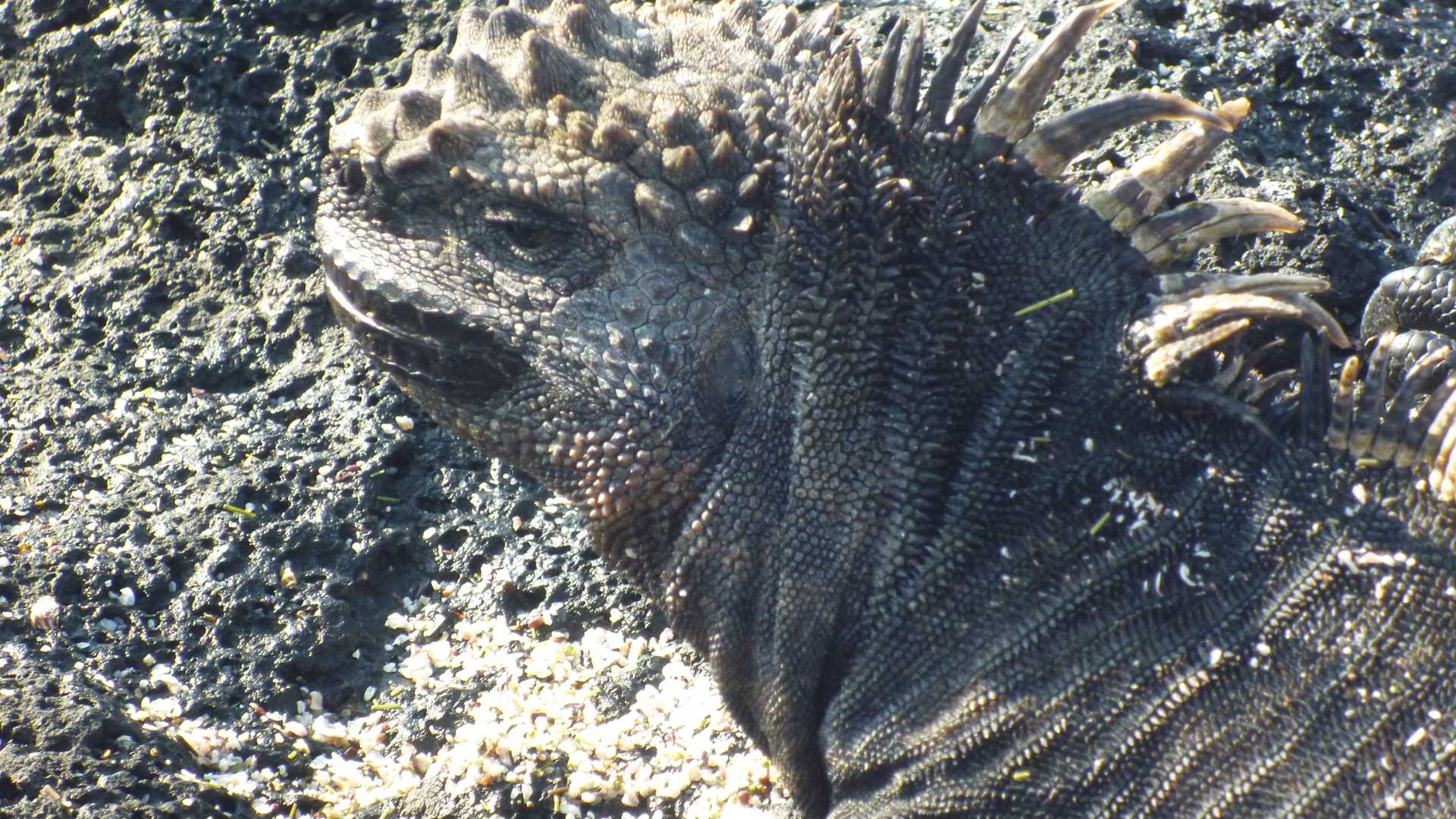The westernmost side of the Galapagos Islands are the youngest islands of the Galapagos archipelago. Fernandina and Isabela, located only a couple hundred kilometers away from the hot spot, are two of the youngest islands, both of which remain volcanically active and have eruptions constantly.
In the morning, Fernandina welcomed us with a big colony of marine iguanas at the landing area; their incredible size is due to the abundance of algae found in the area. At this time of the year, once mating season is over, females are nesting everywhere, and we needed to be extremely careful not to walk on top of them. To walk among the lava in Fernandina is like going back in time; lava cactuses have colonized the bare flows and are making the very first fertile soils where other species of vegetation can eventually arrive and be successful.
Snorkeling allows us the unique opportunity to share the waters with the Pacific green sea turtles that inhabit the area. This outing was probably one of the greatest experiences of the week. The tameness of these creatures was contagious and made us all relax and enjoy the water activity at its fullest.
Our next stop of the day was to the northern part of Isabela, known to us as the "head of the sea horse". We can clearly distinguish the shield-shaped volcanoes that make oceanic islands. Today, we begin to understand how geological time has shaped the place. The productivity of the waters around here or the abundance of nutrients, is due to the upwelling of the cold counter-current of Cromwell to the ocean surface. The nutrient-rich waters are responsible for sustaining the abundance of marine wild life found in Isabela and Fernandina, spreading into the central part of the archipelago from the western islands.
The light in the afternoon along the coast of Isabela, together with the volcanic landscape, filled us with equatorial energy as we enjoyed the sunset from the deck of National Geographic Endeavour II, and crossed the equator with a glass of wine.









